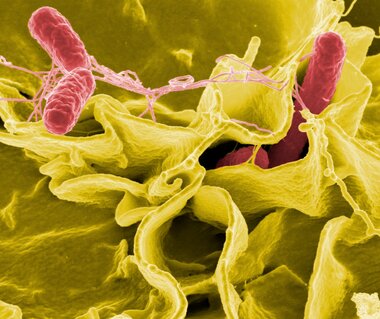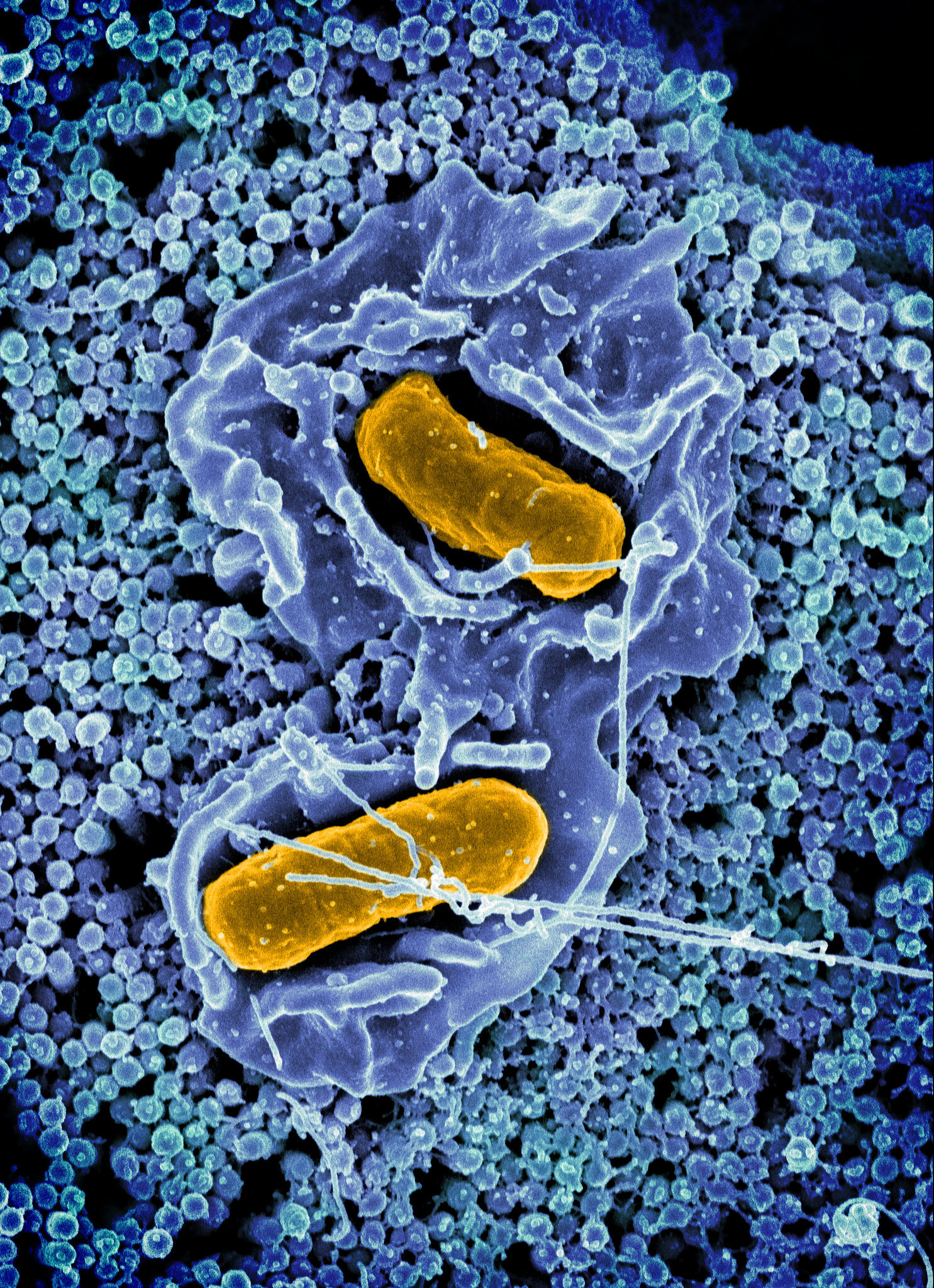Five things to know about Salmonella
Controlling and preventing the spread of this pervasive bacteria is crucial for the farming industry

What is Salmonella?
Salmonella, a genus of bacteria from the family Enterobacteriaceae, is among the leading causes of foodborne illness in Canada and the US. The bacteria lives in the intestines of poultry, swine and cattle, among many other species, and can be found in water and food or on surfaces that have been contaminated with the feces of infected animals or humans.
What is the burden of Salmonella worldwide?
The CDC estimates that Salmonella bacteria causes about 1.35 million infections, 26,500 hospitalizations and 420 deaths in the US every year.
Salmonella poses a challenge for farms globally, regardless of livestock species. One study done on poultry layer farms in Korea found that of the 32 farms and 67 flocks examined, 19 farms (59.3%) and 34 flocks (50.7%) were observed to be positive for Salmonella contamination. In Ontario, Canada, a study done on dairy farms found that of the 100 farms visited, 25% were classified as Salmonella Dublin positive. A Spanish study discovered that Salmonella was present in the feces of 32.2% of free-range pigs surveyed.

How does Salmonella impact human, animals and food?
Most people who fall ill from Salmonella have diarrhea, fever and stomach cramps. Symptoms typically begin six hours to six days after infection and last four to seven days. Salmonella strains sometimes cause infections in urine, blood, bones, joints or the nervous system and can cause severe disease.
The bacteria is pervasive: While it can sometimes cause diarrheal illness in livestock, more often than not, infected animals appear healthy while still being contagious. And Salmonella is hard to kill – freezing and drying do not kill it, and it can survive several weeks in dry environments and up to several months in wet environments.
What is the best, most timely way to detect Salmonella?
Identifying, treating and ultimately preventing Salmonella in livestock is paramount for the farming sector and a key food safety measure that can help reduce disease burden around the world and provide better food products. In addition to hygiene and feed strategies and practical interventions, using the right tools and technologies can help quickly and accurately detect Salmonella and other bacteria and pathogens. A microbial culture using materials such as blood, urine or bile is a standard method for identifying Salmonella, but this process can take at least five days. Therefore, newer and more rapid detection methods such as PCR testing are becoming more prominent in research laboratories and clinical settings.
How does Standard BioTools support the global effort to speed up the diagnostics of infectious diseases like Salmonella?
Standard BioTools™ microfluidics-based technologies facilitate pathogen and bacteria detection and characterization thanks to flexibility in modifying assay targets to match evolving needs and the ability to identify multiple pathogens in one assay. The Biomark™ X9 System for High-Throughput Genomics, the only genomics system for real-time PCR and NGS library prep, delivers thousands of nanoliter-scale reactions in a single run, streamlining PCR workflows and generating insights that can help with surveillance and lead to a more comprehensive understanding of disease dynamics.
Read more about our microfluidics technology
Watch a webinar about using qPCR systems for pathogen detection
Check out other blog posts
Thanks for a wonderful 2023

Standard BioTools closed out the year with a full fall conference season. Here are some of the exciting regional events at which we had the opportunity to showcase our newest tools and technology.
A look into the pathogenic world

Equip yourself with the best tools to diagnose disease and control the course of outbreaks.
12 Days of Spotlights
Check out some of the talk highlights of the year and learn from the best how to integrate microfluidic, cytometric and imaging methodologies into any workflow across a wide variety of research areas.
Unless explicitly and expressly stated otherwise, all products are provided for Research Use Only, not for use in diagnostic procedures. Find more information here.

